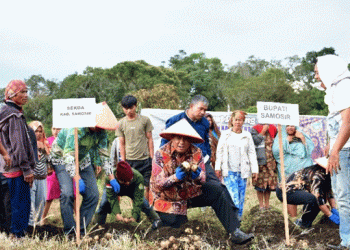Sanitation is kind of like buying socks — not terribly exciting, but oh-so-necessary.And sanitation will be front and center during the 17th annual Fresh-Cut Products: Maintaining Quality & Safety workshop coming up at UC Davis Sept. 18-20.
Barry Eisenberg, United Fresh Produce Association vice president of food safety services, is among the presenters who will be focusing on sanitation in fresh-cut processing.
“Risk assessment and reacting to the knowledge of that risk are absolutely critical,” Eisenberg said. “Do you have the understanding of what is a risk? That’s what this course really helps people understand.”
There can be no shortcuts or ignoring potential problems.
“The major point I am going to be making is that sanitation is a critical process, whether we’re talking about field production or harvesting within a packing shed or a processing plant,” Eisenberg said. “It includes not only the tools, but the equipment, food contact surfaces, and then there’s other surfaces, as well as the environment surrounding your processing equipment.”
Eisenberg said that in addition to routine sanitation, companies need to conduct periodic deep cleaning — either with internal staff or by hiring an outside contractor.
 Justin Kerr, another presenter at the workshop, is vice president of a California-based company called Sanitation Specialists that provides outsourced sanitation management services. With about 16 fresh-cut operations among the produce growers and processing facilities on his client list, Kerr knows the hot spots when it comes to sanitation in fresh-cut production.
Justin Kerr, another presenter at the workshop, is vice president of a California-based company called Sanitation Specialists that provides outsourced sanitation management services. With about 16 fresh-cut operations among the produce growers and processing facilities on his client list, Kerr knows the hot spots when it comes to sanitation in fresh-cut production.
“One of the most common challenges or things that need to be addressed is inorganic soil buildup,” Kerr said.
Calcium oxalate can accumulate, especially in production of spinach and some of the tender leaf lettuces.
“They have a higher calcium content, so there’s a reaction in the wash process, it leeches out and you end up with a calcium buildup on equipment,” Kerr said. “It degrades the cleanability … it can harbor biofilms.”
Repeatability is another issue in fresh cut processing, Kerr said. In dairy, for example, the routine is the same, as is the automation, shift after shift, day after day. Not so with fresh cut.
“When you’re defining produce sanitation, everything becomes manual,” Kerr said. Product moves on open conveyors rather than contained pipes. Dozens of different skews and mixes may be called for in the course of a shift.
“Being a manual process, you have to rely on human nature and human nature is always a tough one to manage,” Kerr said.
But not impossible. It just takes procedures, training and a culture committed to producing safe product.
“Maybe a fruit operation … might have its own growing, packing, shipping and cold storage,” Kerr said. “But once you start to slice, dice, cut or process, it’s taking one mentality and moving it into another.
“You’re hiring people who have a packing house mentality, but now this is ready-to-eat deli sliced tomatoes for a sandwich … it’s pretty simple, but the investment has to be made to be sure everyone understands that it’s ready to eat.”
Kerr said he’s seen many companies making strides when it comes to food safety — replacing old equipment with new, easier-to-clean models; improving drainage and water pressure; adapting new, more functional plant layouts; and fostering cooperation and coordination between production and maintenance departments.
In light of recent instances of contamination in fresh produce, including last fall’s deadly listeria outbreak in cantaloupe from Jensen Farms in Holly, Colo., it’s the only way to go, Eisenberg said.
“The situation in Colorado was rare, but … it woke everybody up,” he said. “You can’t overlook potential risks. It takes time and money to address it, but you don’t have a choice.”







